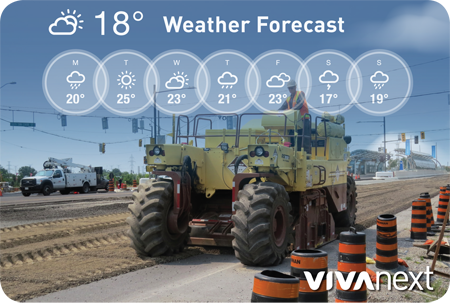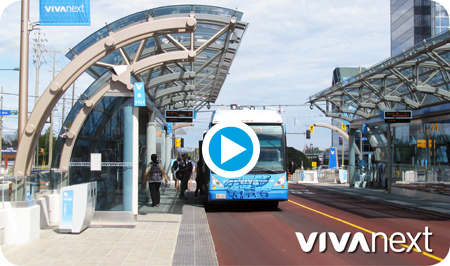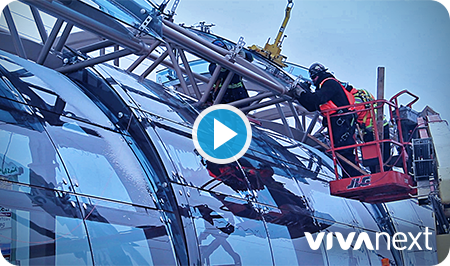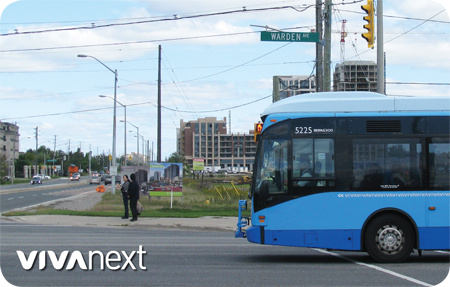Sometimes the best way to get through big, complex tasks is to split the workload – divide and conquer. This is especially true with York Region’s transit network, so we work alongside the Transportation Services Department.
With strategic plans in place, the Transportation Services Department plans the overall transportation network, including roads, transit and cycling. They create a Transportation Master Plan, which takes into account many factors, including ideas from residents, population growth and other statistics, provincial mandates like Places to Grow, and environmental protection measures like the Greenbelt and Oak Ridges Moraine. They also build and maintain roads, and through YRT/Viva, operate conventional YRT transit, Mobility Plus and Viva rapid transit.
At vivaNext [York Region Rapid Transit Corporation], we put the rapid transit part of the Transportation Master Plan in place. We work with all levels of government to acquire funding for each new project, whether it’s Bus Rapid Transit rapidways, subways, or transit facilities. We design and build these projects – including details like station locations and designs, sidewalks and lighting.
As the project manager, we set timelines and manage construction contracts. The rapidways are major infrastructure projects requiring careful scheduling and seamless handovers when each project goes into service. At this end point, the operations are handed over to YRT/Viva, and the maintenance is done by either York Region or the local municipality, depending on who owns the road.
At vivaNext we have some projects in place already, more scheduled for the next four years, and a few projects yet to be funded. Along with York Region’s growing population, there’s a growing need for transit. So there’s a lot to do, and we’re working hand-in-hand to get everything done.
If you’re looking for a few videos, you can get a glimpse of the transformation of York Region, see what York Region’s Transportation Services does, or just catch a little excitement.










